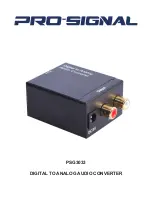
©
National Instruments Corporation
I-1
Index
A
AC front panel, 1-3
application examples, C-1 to C-4
connecting HP7475 GPIB plotter to PC
serial port, C-3 to C-4
using GPIB-232CV-A as high-speed print
spooler, C-1 to C-3
ATN* signal, assertion in D mode, 3-3
B
buffer size for serial port, choosing, 3-4
BUSY LED (table), 1-5
C
C mode configuration, 3-7 to 3-11
choosing between D mode and
C mode, 3-1 to 3-2
Controller-in-Charge, 3-7
<CR> or <LF> termination
mode, 3-9 to 3-10
data transfers, 3-7
example of system setup (figure), 3-2
IFC* assertion, 3-7
modes of operation, 3-8 to 3-11
no-swap mode, 3-10 to 3-11
REN* assertion, 3-7
system layout (figure), 3-7
timeout termination mode, 3-8 to 3-9
when to use, 3-2
cables, connecting, 2-7
configuration, 2-1 to 2-6
factory configuration settings, 2-1
location of switches on rear panel
(figure), 1-5
operating at incorrect voltage (caution), 2-1
parameters for SW1 switches
<CR> or <LF> termination
mode, 3-9 to 3-10
default settings for SW1 (figure), 2-2
Listen-only mode setting (figure), 3-6
parameters for SW1 switch 8
(table), 2-4
parameters for SW1 switches
1 through 5 (table), 2-2 to 2-4
parameters for SW1 switches 6 and 7
(table), 2-4
serial port parameters
factory default switch settings
(figure), 2-5
SW2 switches 1 through 3
(table), 2-5 to 2-6
SW2 switches 4 through 8 (table), 2-6
conventions used in manual, xi
<CR> or <LF> termination mode, C mode
configuration, 3-9 to 3-10
CTS signal, RS-232 port (table), B-2
D
D mode configuration, 3-3 to 3-6
ATN* signal asserted, 3-3
choosing between D mode and
C mode, 3-1 to 3-2
choosing serial port buffer size, 3-4
conditions causing SRQ assertion, 3-5
data transfers, 3-3
example of system setup (figure), 3-2
listen-only mode operation, 3-6
maximizing performance with SRQ, 3-5
serial poll responses, 3-6
system layout (figure), 3-3
Talker or Listener mode, 3-3





































